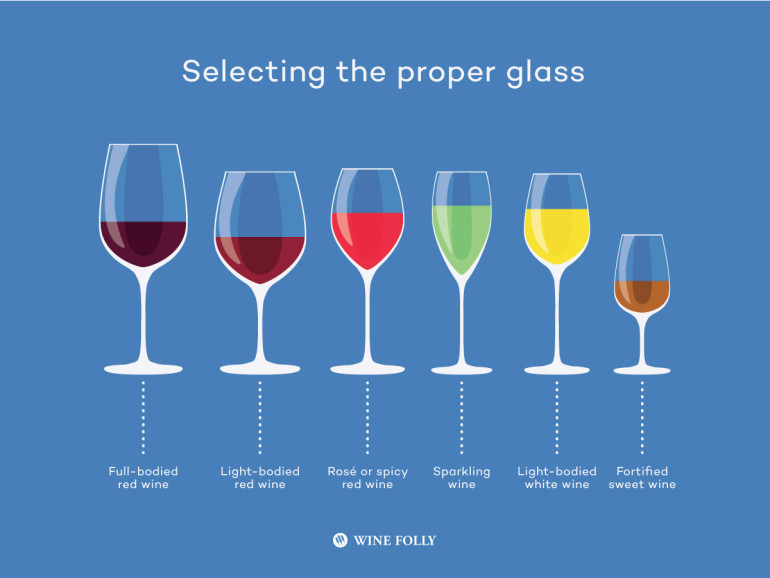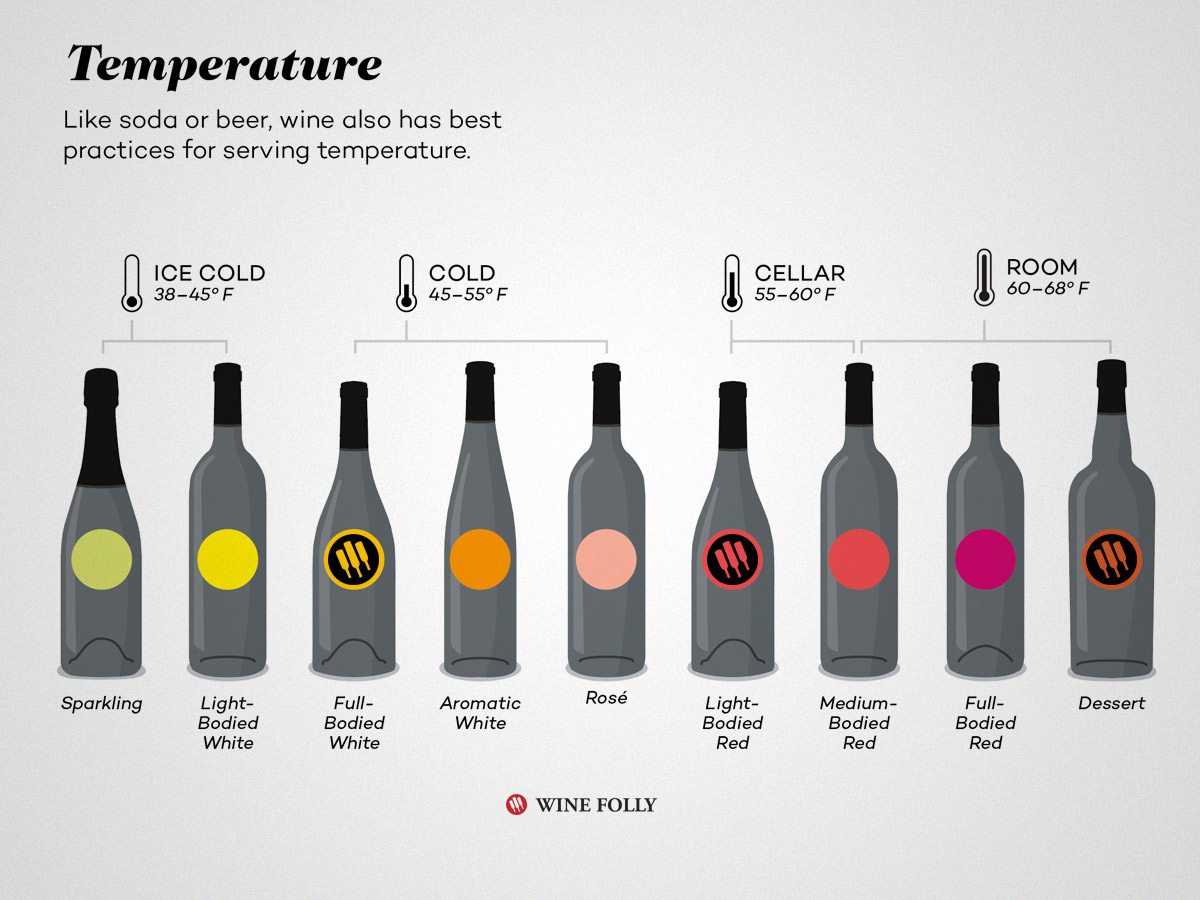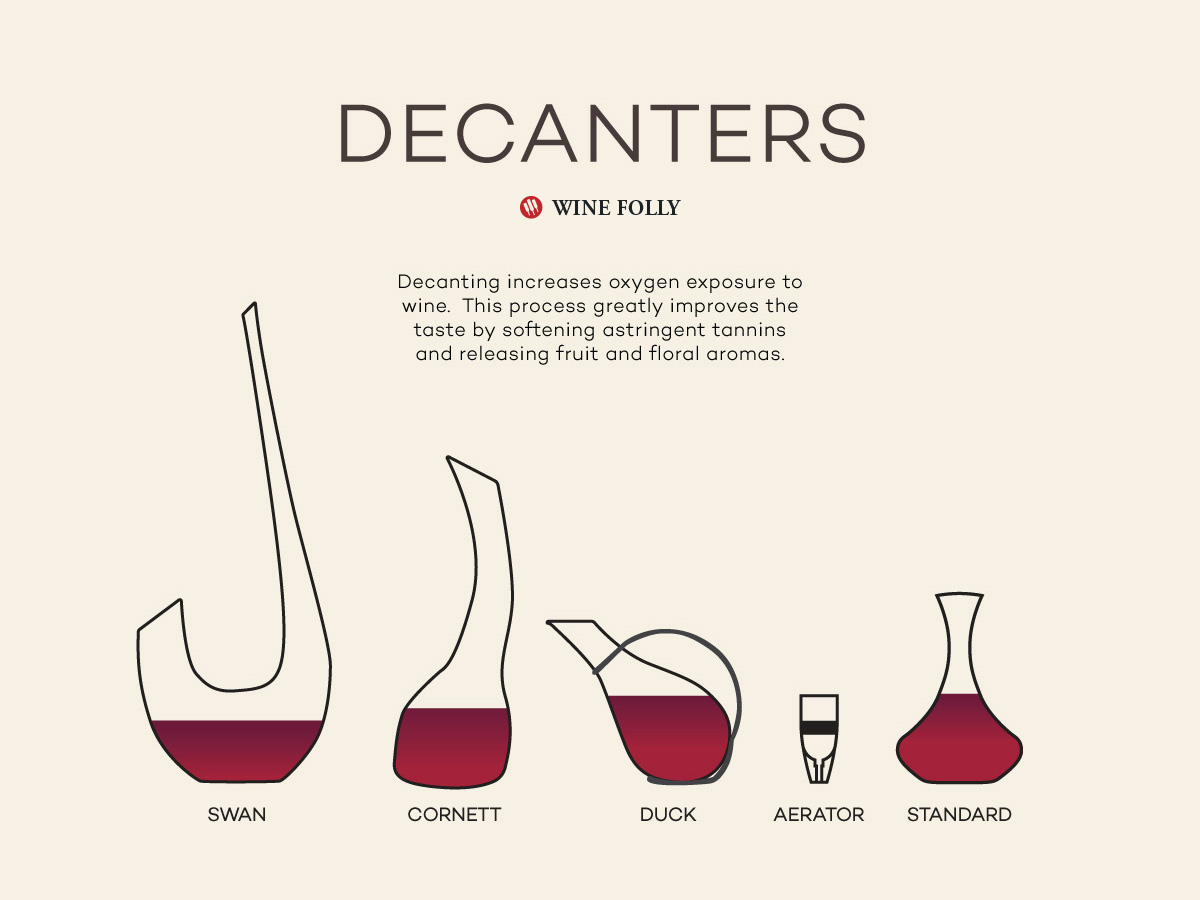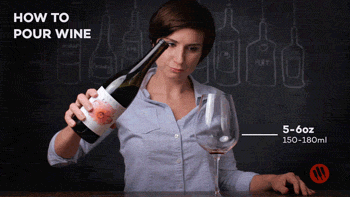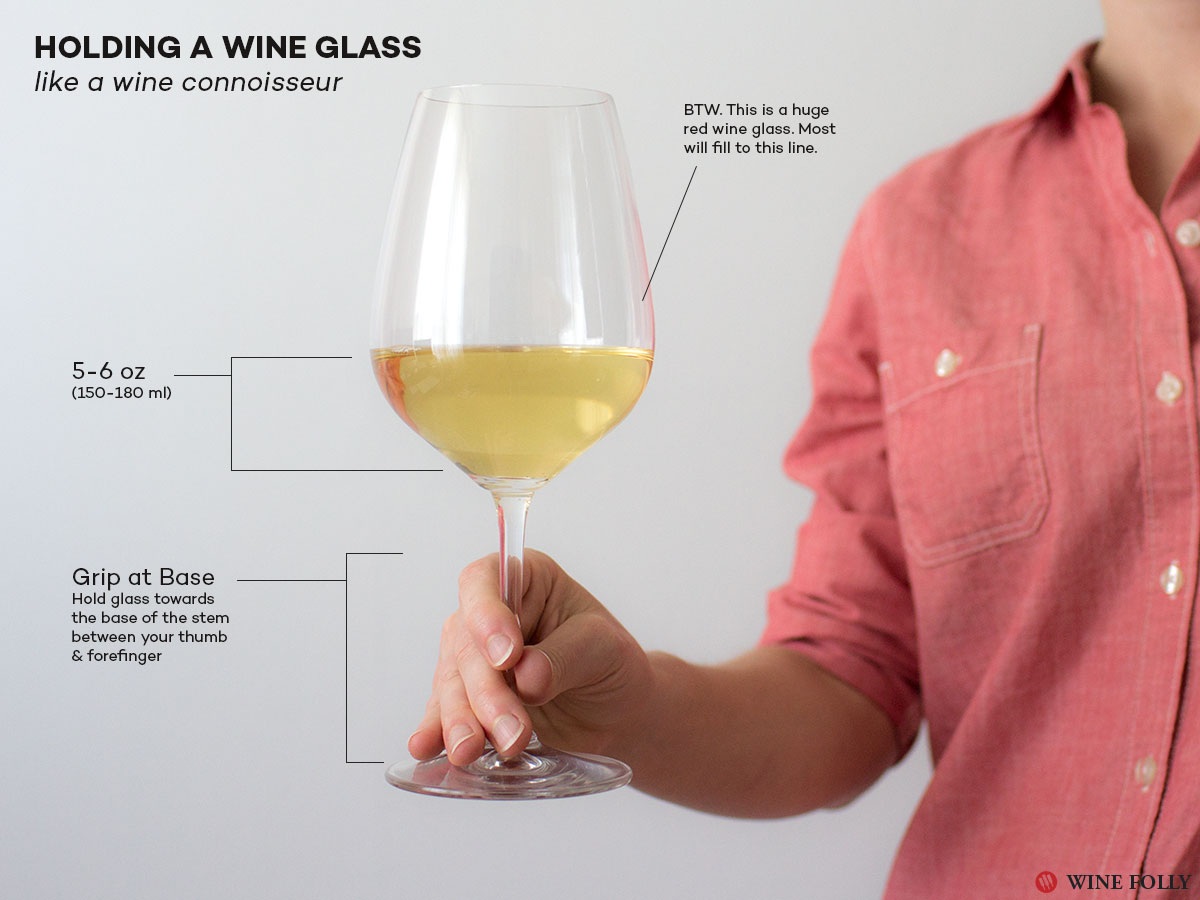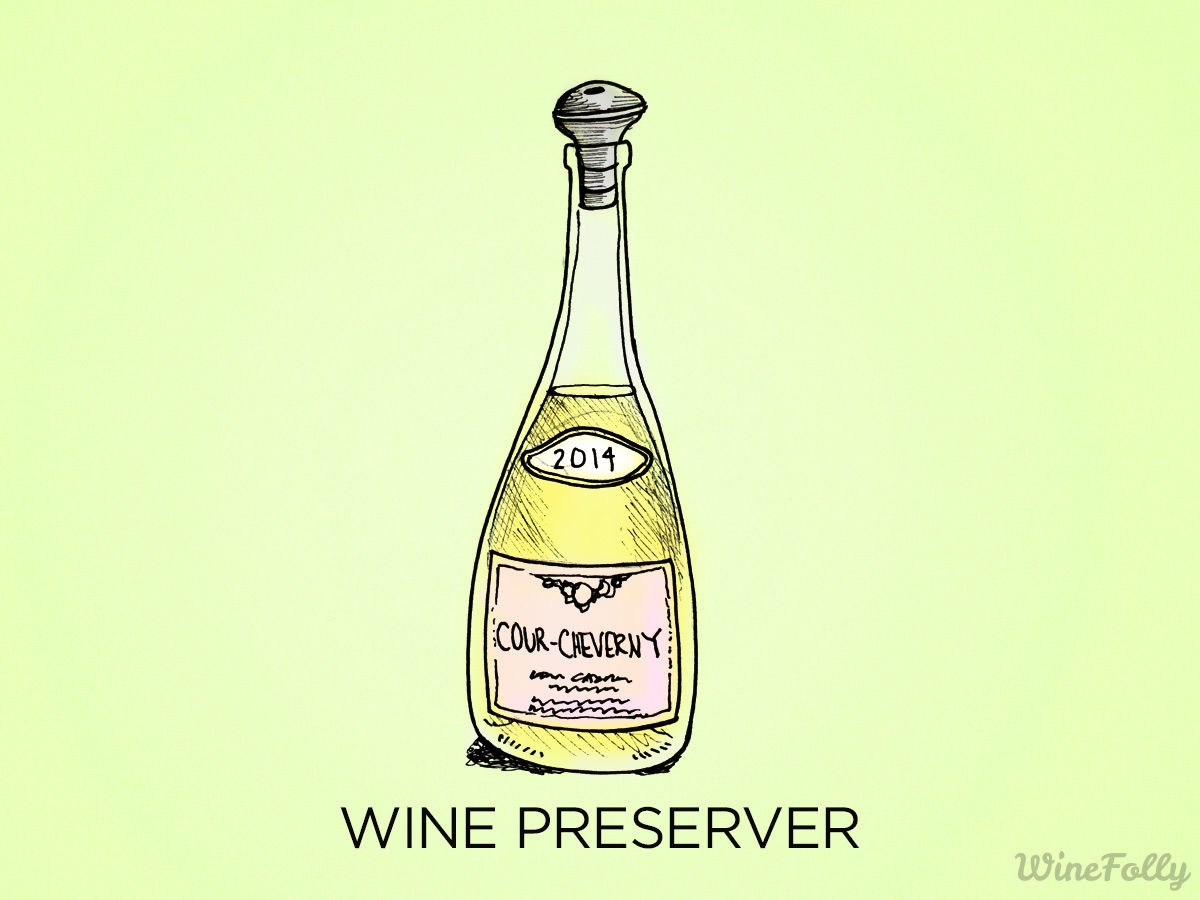The basics on serving wine including tips from picking the right wine glasses to pouring wine without spilling. Some of these tips will even improve the flavor of wine.
Serving & Glassware
Wine is a peculiar beverage. Serving it in different glasses can change the way it tastes. This simple guide aims to help with the basics of serving wine and picking glassware to ensure that your wine tastes the best it possibly can.
You don’t have to spend a million dollars to drink the high life.
1. A proper glass will make any wine taste better
In 1986, Georg Riedel, a 10th generation Austrian glass maker, came out with a line of affordable machine-made crystal glasses called Vinum. The line featured different glass shapes for different types of wine. It caused a lot of confusion.
Consumers were accustomed to using just one wine glass and the Vinum line seemed to be complete overkill. Georg Riedel had a clever solution, he started hosting “wine glass tastings” to prove first hand the difference it makes.
Regardless of his profit motives, Georg was right. Even novice wine tasters noticed a difference between certain glasses. Ten years later, Georg was awarded Decanter Man of The Year for his contribution to the wine world.
Of course, this doesn’t mean that you have to buy the entire line of Riedel, Schott Zwiesel, or Zalto… it just means that you might want to figure out which wine glasses fit your drinking style because it will make your wine taste better.
Choosing Proper Glassware
Learn why certain wine glass shapes are better for certain types of wine than others. Use this knowledge to find the best 1 or 2 glass shapes for your own home collection.
2. Wine tastes better served slightly cool
Hopefully you’ve already experienced how wildly different your coffee, tea or soda (luke warm Coke anyone?) tastes at different temperatures. This same ideology applies to wine. Also, some of the more delicate floral aromatics in fine wines are completely subdued at overly cool temperatures or burn off too quickly when the wine is too warm.
TIP: Serving affordable wine slightly chilled will disguise most “off” aromas.
- Red Wine: tastes better when served slightly below room temperature from 53 – 59°F (12.5 – 15.5°C) (light red wines like Pinot Noir taste better at the cooler end of the spectrum)
- White Wine: tastes great from about 44 – 57°F (7.5 – 12°C). (zesty whites on the cool side and oak-aged whites on the warm side)
- Sparkling Wine: Affordable sparklers do great at 38 – 45°F (3.5 – 7.5°C)(serve high-quality Champagne and sparkling wines at white wine temperatures)
TIP: A wine above 70 °F will start to smell more alcoholic because of increased ethanol evaporation that occurs as the temperature rises.
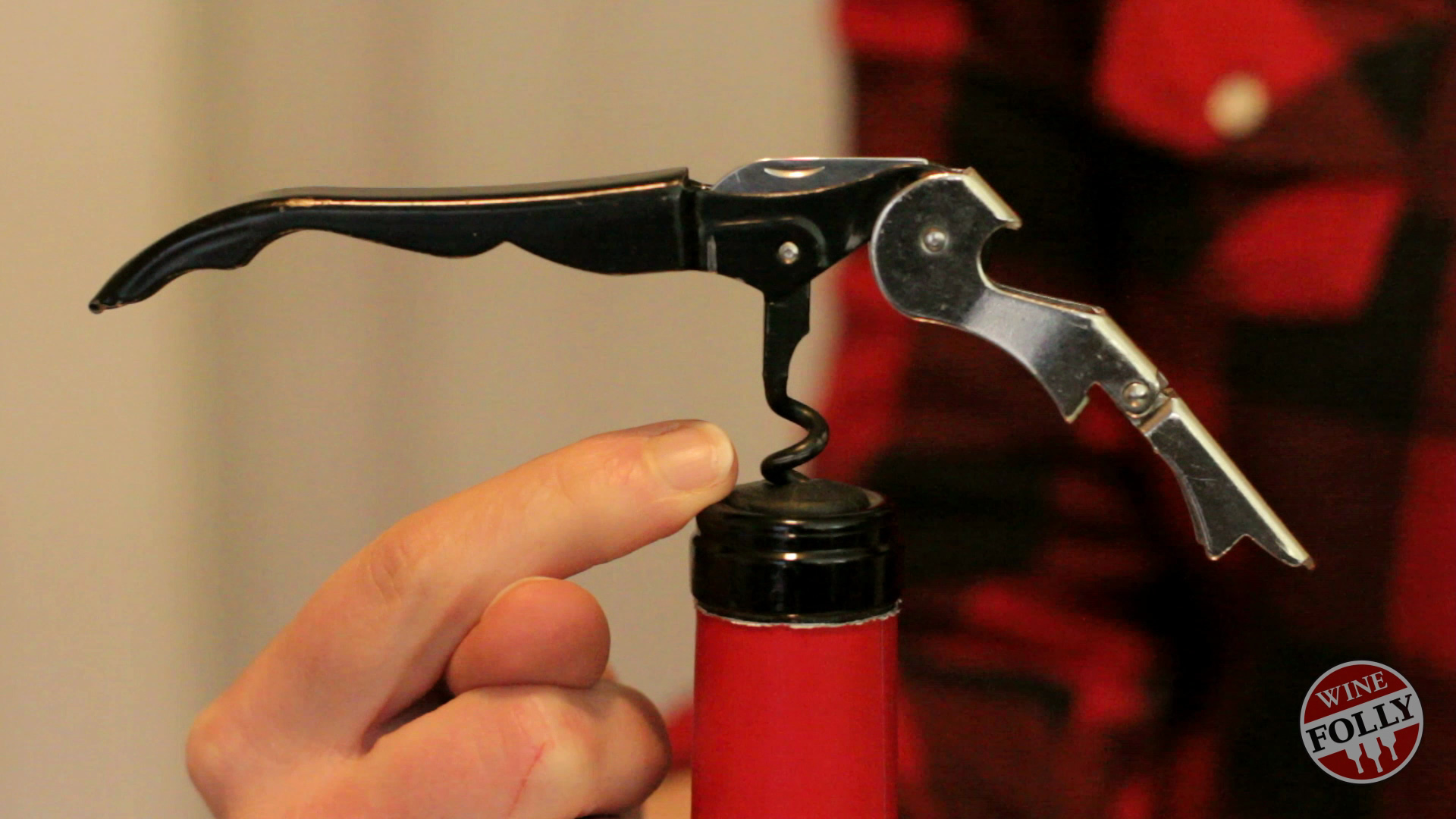
3. Perfect the Ritual to Open a Bottle of Wine
There are many different types of wine openers and the most popular with pros is the waiter’s friend. Most of us instantly get the logic of inserting a corkscrew into a cork and using a lever arm to hoist the cork out, however it’s the little details that bewilder us.
Cutting the foil: top lip or bottom lip?
Wine sommeliers cut the foil at the bottom lip. This is the tradition because foils were previously made out of lead. Also, this method tends to reduce stray drips when pouring at the table. Foil cutters, on the other hand, are designed to cut the top of the lip. Cutting the top lip is more visually appealing and ideal for moments where the wine is on display (like at a wine tasting).
Where to poke the cork?
Poke the cork slightly off-center. You want the radial diameter of the worm (the ‘worm’ is the curlycue part of a wine opener) to be centered so that it’s less likely to tear the cork.
Keep the cork from breaking
It takes about seven turns to insert the worm into the best spot, although wine openers vary. Basically, the corkscrew should be inserted into the cork about one turn less than all the way in. Some fine wines have long corks and you can go all the way in.
4. Nearly every red wine tastes better decanted
Decanting is the one thing we always forget to do that will greatly improve the flavor of red wine.
The classic method is to pour wine into a glass pitcher or wine decanter and let it sit for about 30-45 minutes. The faster way is to use a wine aerator which decants wine almost instantaneously.
With the exception of very old red and white wine, almost no wine will be harmed by decanting it (including sparkling), so it becomes a “Why not?” situation.
If you buy very affordable wine (sub-$10) on a regular basis, it’s not uncommon to smell rotten egg or cooked garlic. This happens even on some fine wines. Despite their sulfur-like aroma, these smells are not from sulfites nor are they bad for you.
It’s a minor wine fault that is caused when wine yeast doesn’t get enough nutrients while fermenting, often during large, industrial-grade fermentations.
Decanting a cheap wine will often alter the chemical state of these stinky aroma compounds, making them more palatable.
TIP: Rotten egg aromas in wines can be removed by stirring the wine with an all silver spoon or, if you’re in a pinch, a piece of sterling silver jewelry.
5. Pouring a Standard Wine Serving
- A bottle of wine contains slightly over 25 ounces of wine.
- Bottles are commonly portioned into five servings – 5 oz/150 ml.
- A typical wine glass is 17-25 oz. and designed to hold aroma.
- Try not to overfill, protect your aroma!
6. Holding a wine glass
So, now that your wine is in your glass, how are you supposed to handle the awkward top heavy glass? It seems logical to cup the bowl, however your hands will heat up your wine, so hold it by the stem.
It’s really the secret handshake of the wine elite.
7. How long does wine keep after opened?
Most wine won’t last through the night if the bottle is left open. Here are a few tips to preserve open wines for much longer:
- Wine preservers are awesome, use them
- Store open wines in the fridge (or wine fridge if you have one!). This cold storage will slow down any development of the wine, keeping it fresh.
- Keep wine away from direct sunlight and sources of heat (like above your fridge or oven.)
Learn more about wine! Subscribe to Wine Folly’s free newsletter and get 50% off on our Wine 101 Course.

